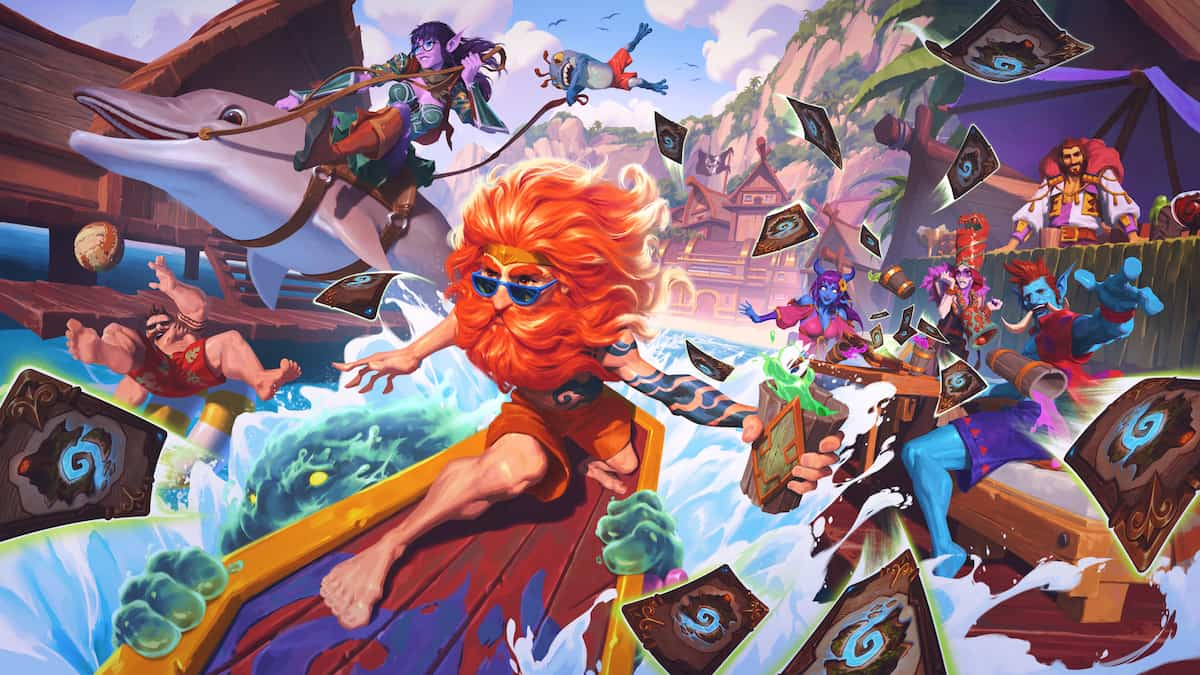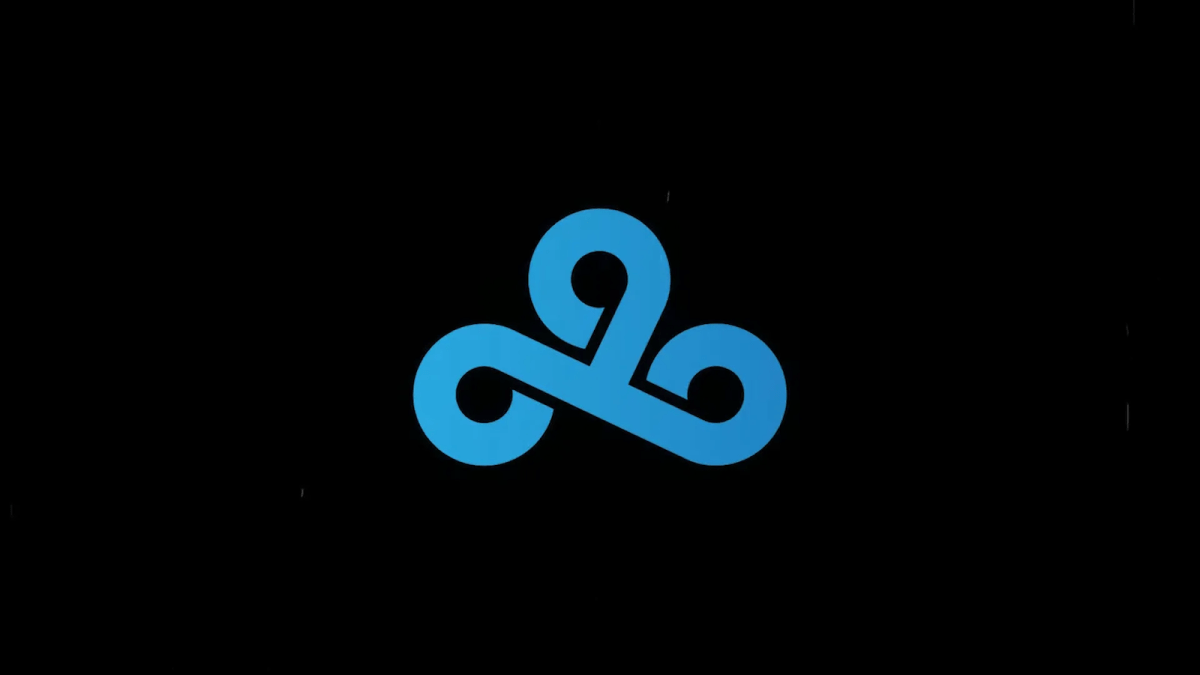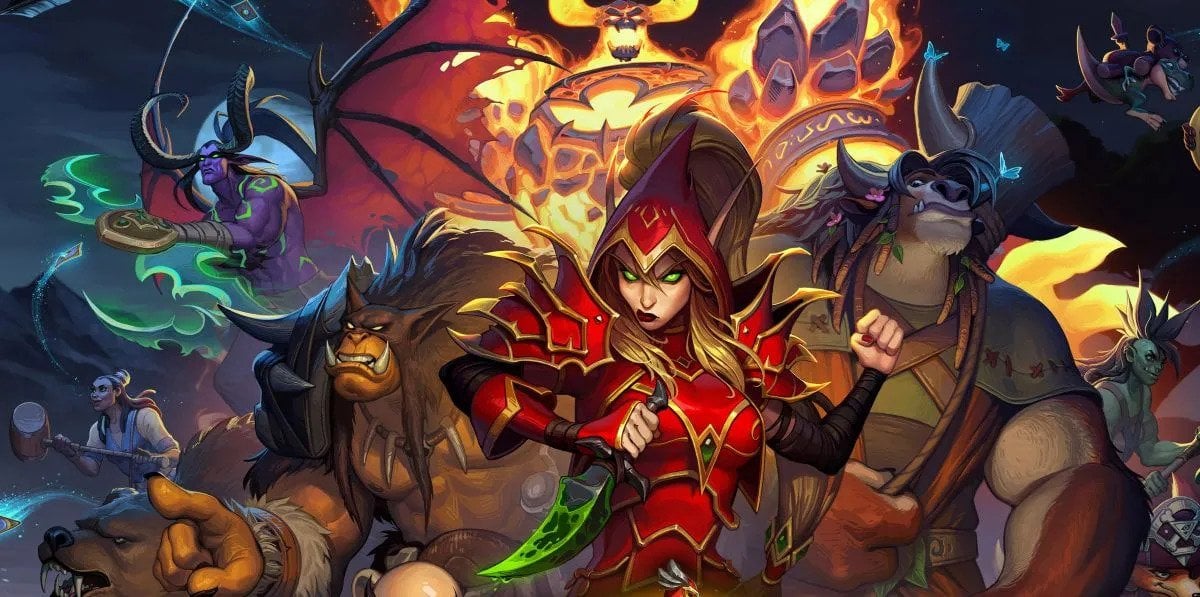Soon after the release of Whispers of the Old Gods, I’ve introduced you to my optimized C’thun Mage decklist – which is still going strong with some tweaks, by the way – but also recommended you check out Nuba’s Roulette Mage, a deck I’ve played for a long time since then because it’s good enough for early ladder climbing and a lot of fun to play.
Lately I’ve gotten bored of my cthun deck and decided to research and optimize Nuba’s original into a more consistent, less RNG based Tempo Mage.
Disclaimer: I don’t claim to have created this deck; I’m not a deck brewmaster. I simply pick stuff up and, through experience and research, try to optimize decks. It’s very likely that you will find very similar versions across the web, as it is currently a popular archetype.
This deck has been around in one form or another since the dawn of Hearthstone and each expansion usually refreshes a couple of its staple cards, ensuring that it remains relevant in every metagame.
Whispers of the Old Gods gave us yogg-saron-hopes-end, a last ditch effort that relies on RNG to turn the tables when things go sour. Despite being a very dangerous card to use, it solves one of the deck’s historical weakness: having a hard time to retake a lost board.
Deck Overview and Strategy
This is an intermediate level deck as far as the required skill to play it goes. The main goal should be to build an early presence on the board, and then use either removal spells or high-value minion trades to control the opponent’s board development while continuing to grow yours.
The most important step is ensuring a fast start – see the mulligan tips below – so mana-wyrm is your best friend, especially when combined with your cheap removal spells frostbolt and arcane-missile . Of course, the-coin is a win here, too. But besides mana-wyrm, you have some good minions with which to build a solid early board presence.
Board control is crucial. This is not a face deck and you should only go face if you can’t trade favorably, or you see a path to lethal. This deck has a hard time regaining the board if it loses it, – flamestrike is quite expensive and yogg-saron-hopes-end is a fickle master – so that’s not a position you want to be in.
In fact, the most important aspect of learning how to play this deck is figuring out how to balance aggression with control. This is one where you want to play the control game – especially if the game is going slow – and then go in for the kill once you see you have a good amount of damage in your hand – something that should happen sooner rather than latter with all the spell damage and the fireball / forgotten-torch combo.
Card Choices and Synergy
arcane-blast was ignored for a long time and is still not well loved by many players, but it has good synergy with many other cards in this deck. You can either use it to remove a threat to your early minions, or combo it later on with a spell damage minion to remove a big one.
arcane-missiles can be useful to deal with an early zoo rush and are especially good at dealing with those annoying divine shields that are starting to become more and more popular on paladin lists. But make no mistake – this card’s primary purpose in this deck is fattening mana-wyrm .

mana-wyrm is, just like in my previous deck, your Most Valued Play (MVP) on turn one and it can easily trade favourably with most early game minions. Feel free to nuke any first / second turn enemy minion with frostbolt in order to fatten the wyrm for the next one.
cult-sorcerer has a decent body for the cost and provides nice early-game spell damage, so it’s worth including even without his boss, cthun. Plus, seeing you use it and not getting the cthun boost will make your opponent underestimate you – a very good thing!
sorcerers-apprentice makes three of your spells free-to-play, and that’s a big deal if you can use them to activate mana-wyrm and / or flamewaker multiple times in a turn. Don’t overlook this – but also don’t spend all your resources unless you see a clear advantage to be gained.
forgotten-torch is no-regret early-game removal. Use it safely in the knowledge that you’re building it up as a finisher later on.
arcane-intellect is your standard drawing engine. In the early game you should use it liberally to fatten your mana-wyrm; in the late game you’ll want to use it to look for your finishers. Don’t rush using up those 3 mana crystals, though.
Unless you have lost control of the board and need more removal options in your hand – and if you’ve gotten to that point, you’re in bad shape – you should always prioritize removing threats and building your side of the board over looking for that fireball or forgotten-torch .
water-elemental is still one of the best bodies in the game, and in a pinch you can sacrifice it versus a big minion in order to gain one more turn. It’s especially valuable in matches versus warriors, paladins and rogues, as you can screw up their weapon use.
faceless-summoner is such fantastic value that it’s almost criminal not to include it in any Tempo Mage moving forward. This, along with azure-drake, will be the backbone of your transition from mid to late game – and will divert your opponent’s attention from dealing with any early-game minions that you may have been able to keep alive.
ragnaros-the-firelord replaces the usual archmage-antonidas as your end-game punch. Antonidas is usually at odds with your need to use cheap spells early on to get the most out of mana-wyrm and flamewaker, so Ragnaros slots better in the overall strategy, and is considerably easier to get value from.

yogg-saron-hopes-end is your Alamo. You should never play this if you are ahead, or feel you have a chance to turn things around. This is do-or-die time, your desperation move – it will kill you as often as save you. Actually, it will kill you more often than save you. Really. Use it when you have nothing to lose.
Alternate / Tech Cards
VS aggro, you may consider removing faceless-summoner altogether, as well as your one flamestrike (too slow) and adding two blizzard plus and extra water-elemental .
If you feel you are controlling the pace of the game but mid-game minions / weapons prove a nuisance, you can again remove both faceless-summoner for a second water-elemental and bloodmage-thalnos .
Finally, if you see yourself not needing all that much early and mid-game removal, consider swapping ragnaros-the-firelord back to archmage-antonidas . Or, if you are feeling especially daring, remove a single faceless-summoner and go with both finishers.
Mulligan Guide
There’s an argument to be made for mulliganing to get mana-wyrm , always, regardless of the rest of your hand. I’m in agreement with this, especially if you have the coin . The mana-wyrm really is the star of the show. If you are lucky to get it in the first draw, go look for arcane-missiles , arcane-blast or frostbolt to pair it up with.
If you feel like you’re going up against aggro, it’s also worth looking for flamewaker , one of which can ruin a Paladin’s or a Warlock’s day.
Closing
Tempo Mage is an archetype that’s here to stay – it’s fun and reliable. This version is quite fast and although it can be challenging for beginners, an intermediate player should settle right into it after a couple of evenings.
And don’t be afraid to experiment with making it your own. It’s a very flexible deck and it can accommodate a good amount of tinkering and fine-tuning to any meta or personal preference. Just try to keep to the mana curve as much as possible.
Do let me know what are your experiences and thoughts in the comments section below – I will update the main article with any particular juicy insights that you, the readers, may offer.





Published: Jul 8, 2016 09:27 am